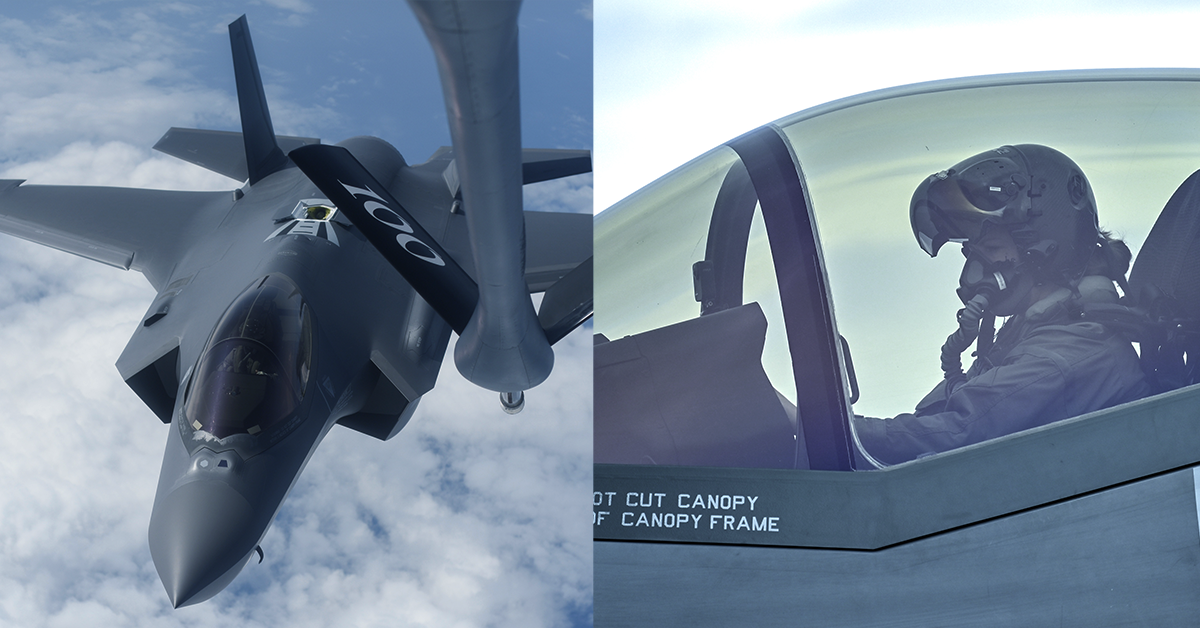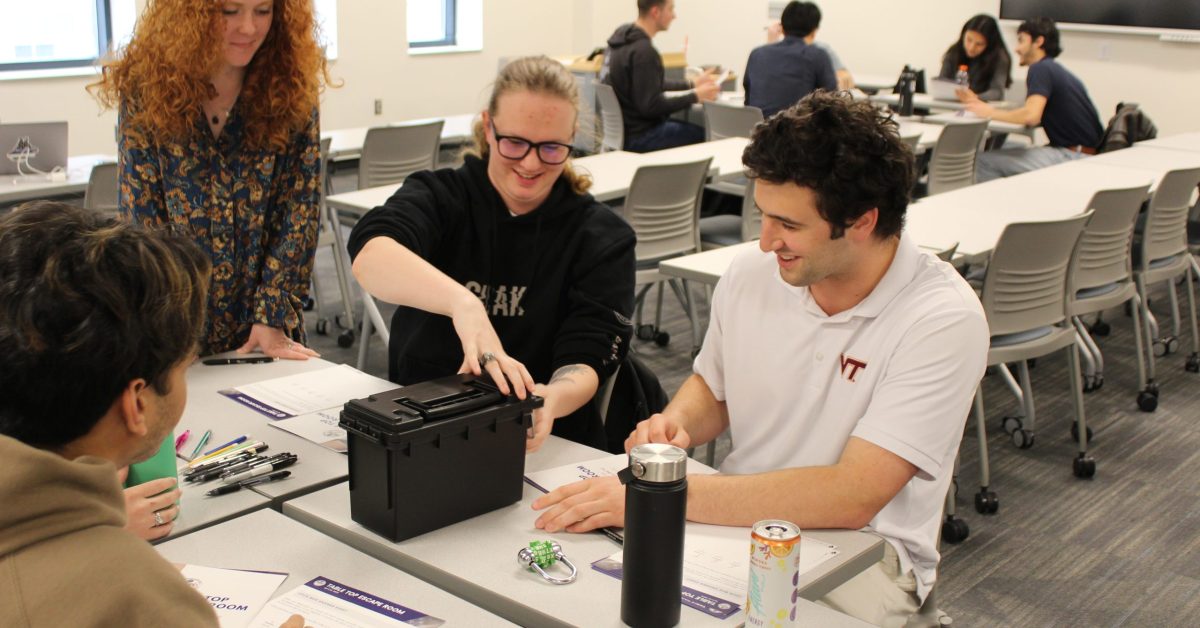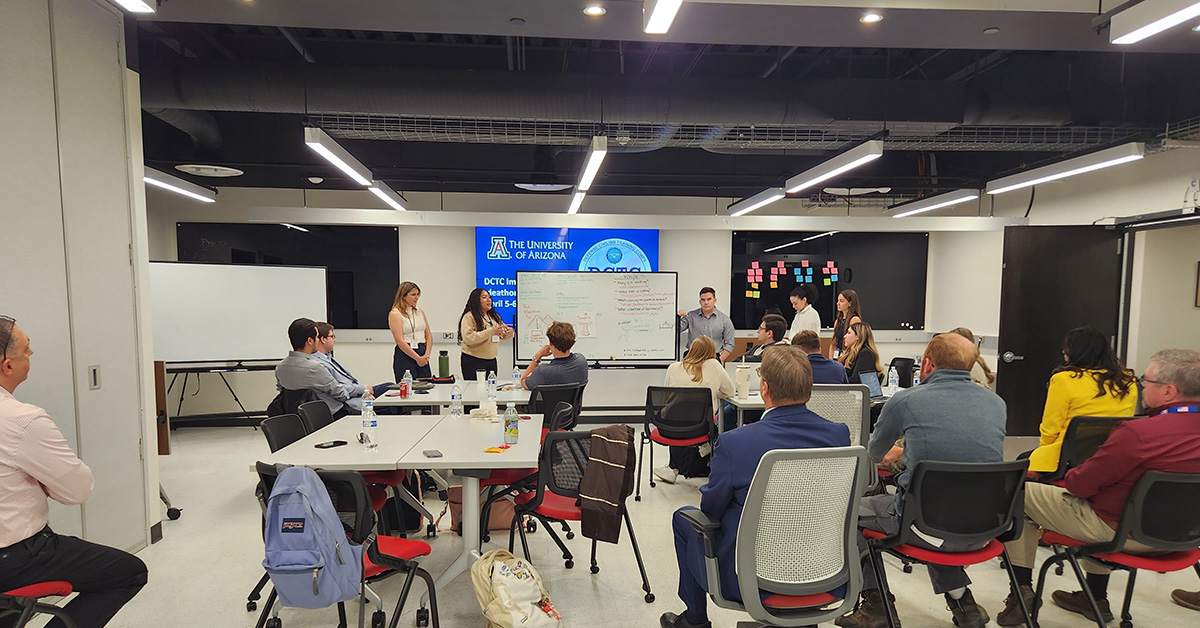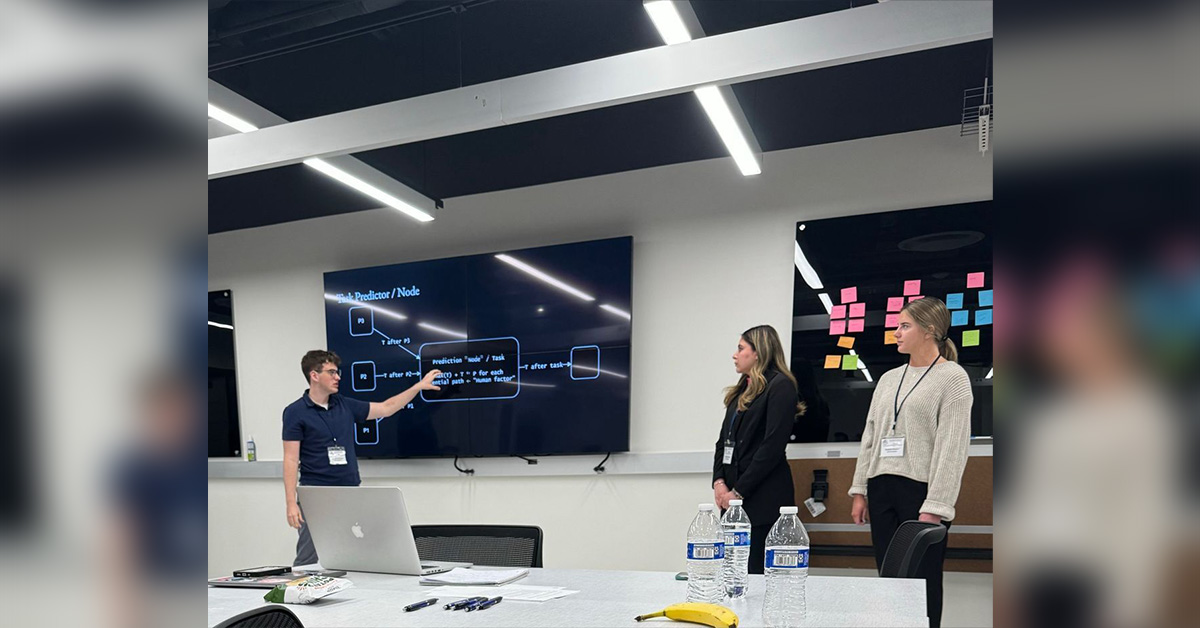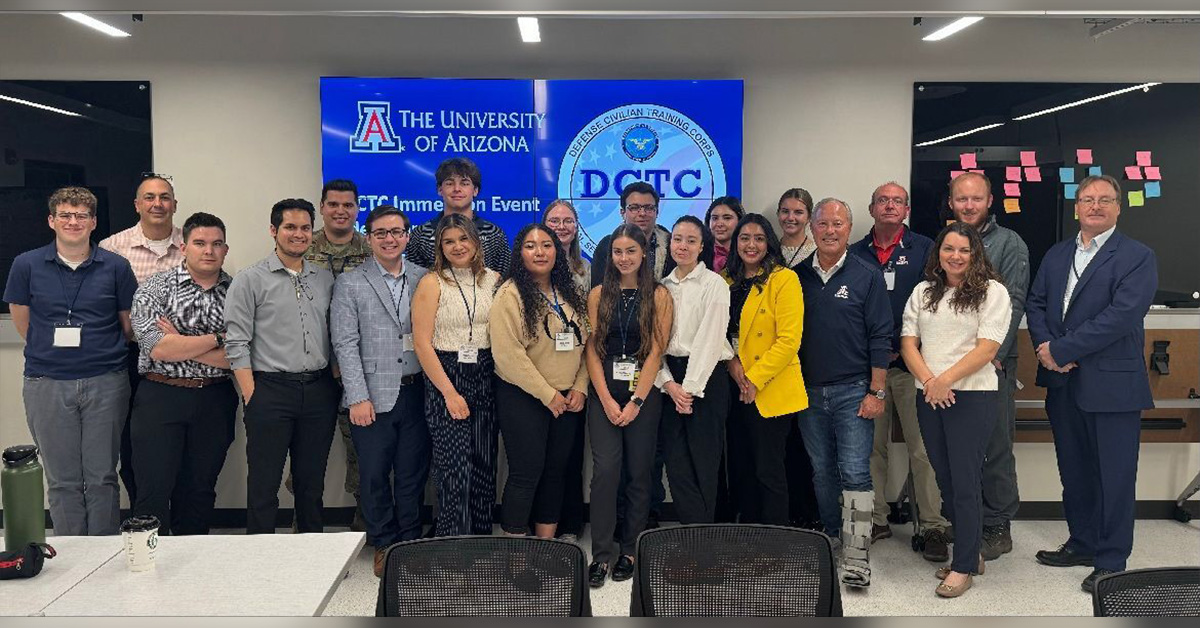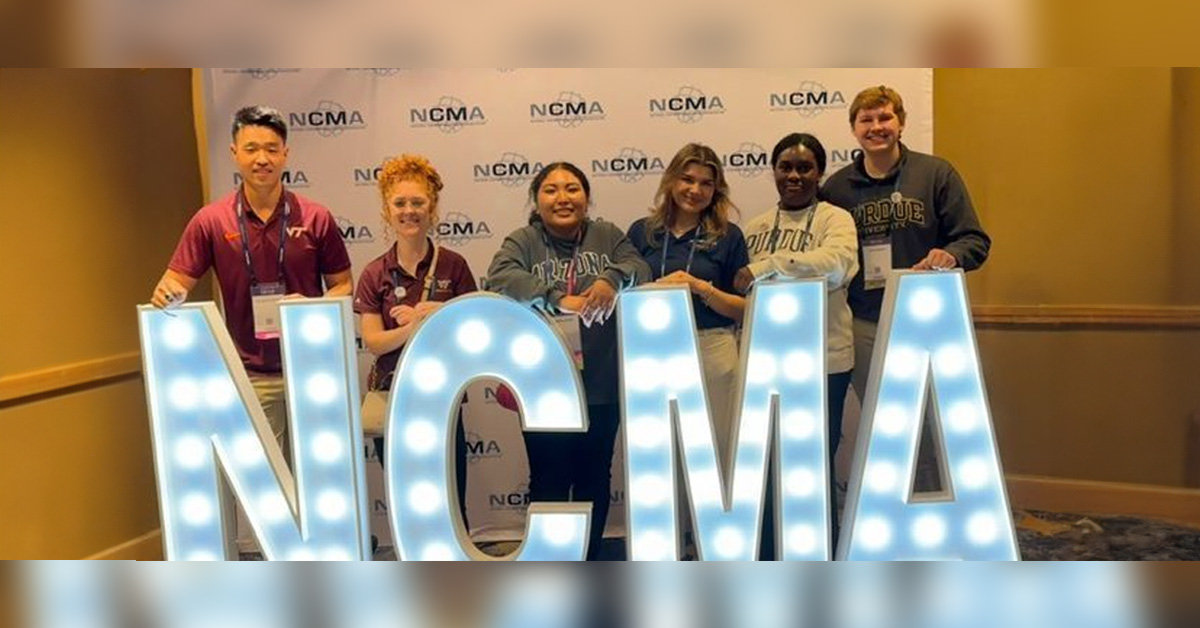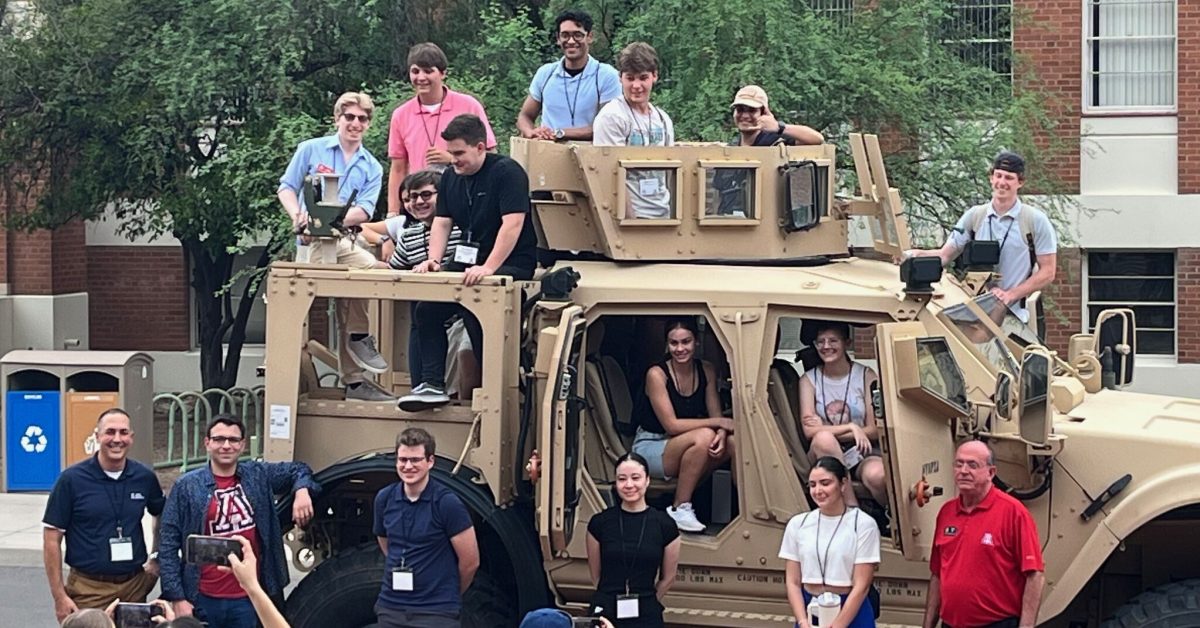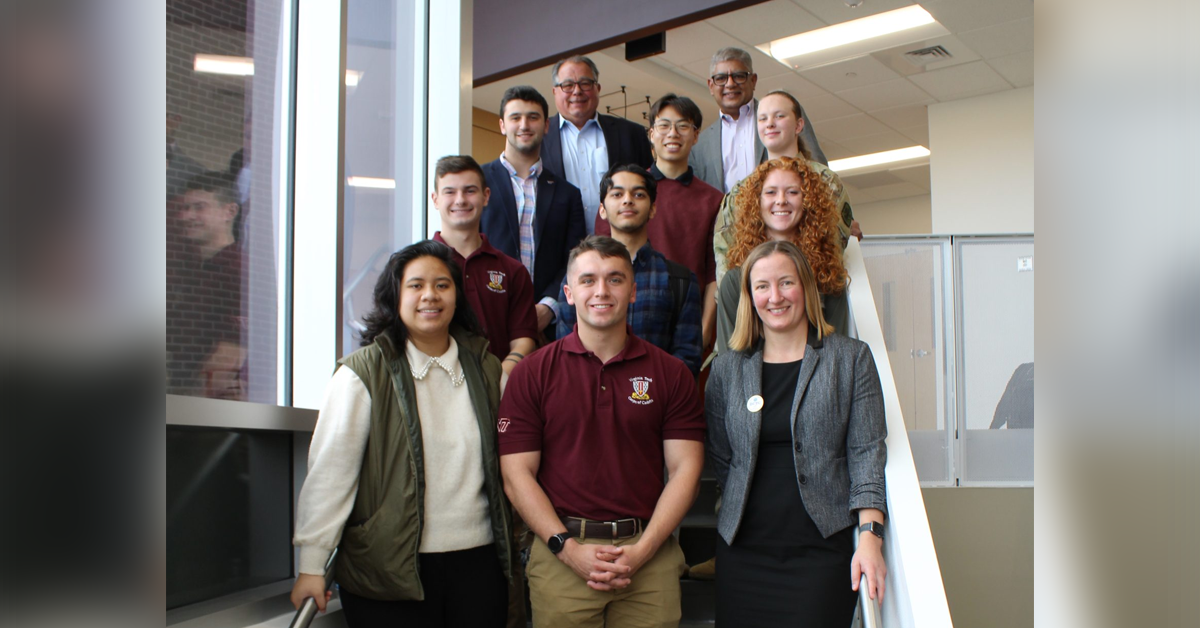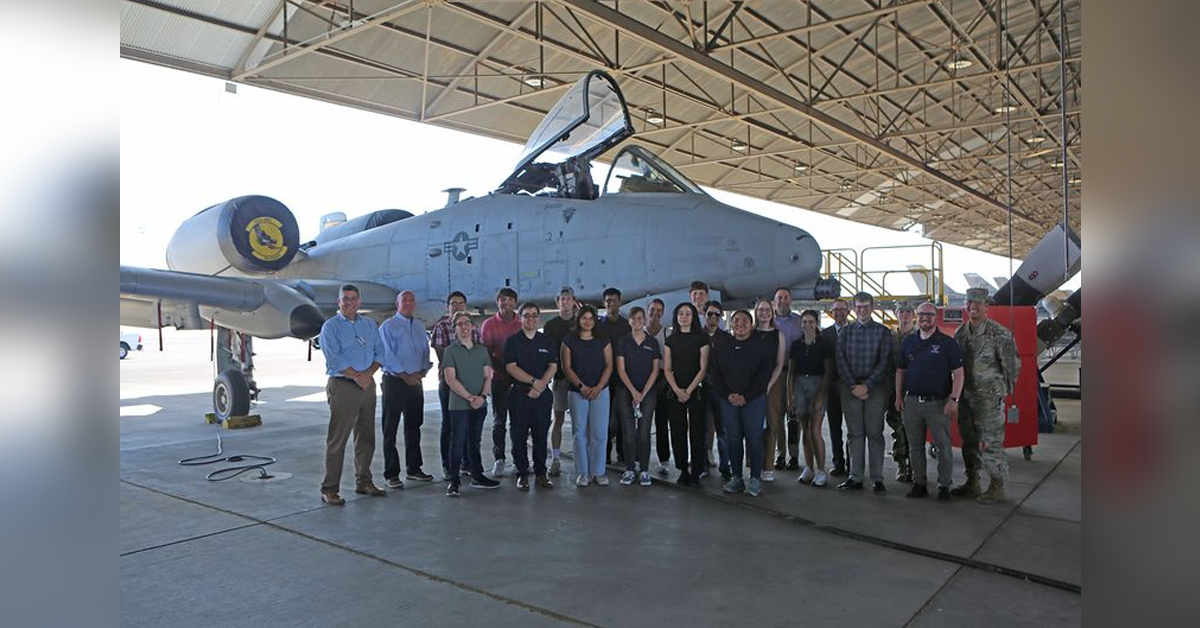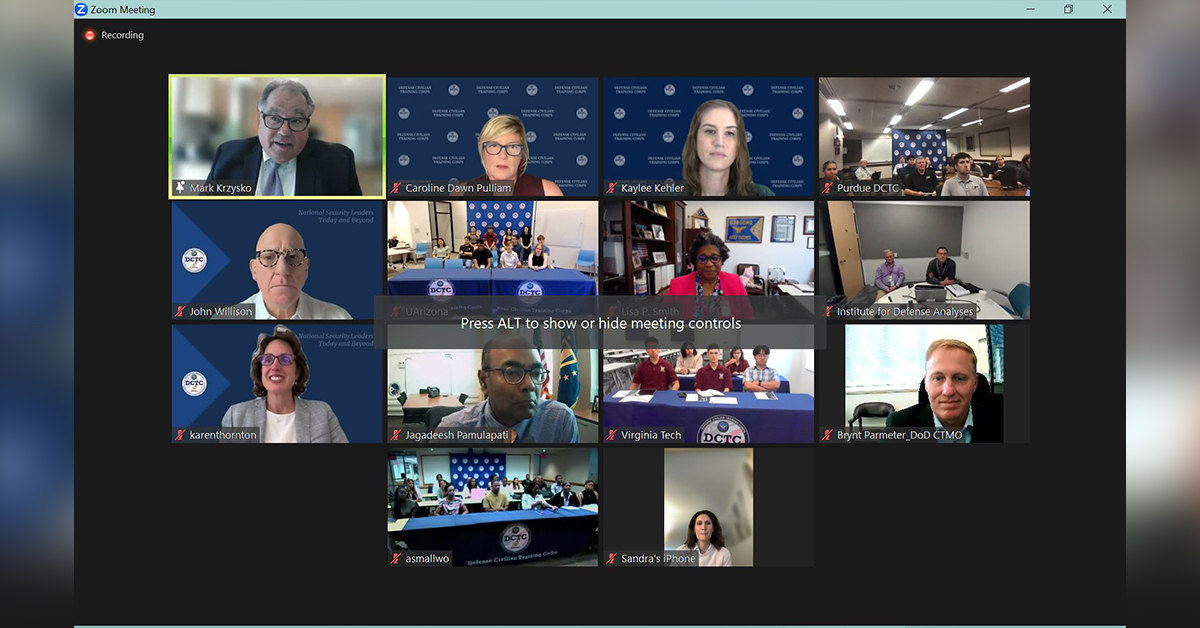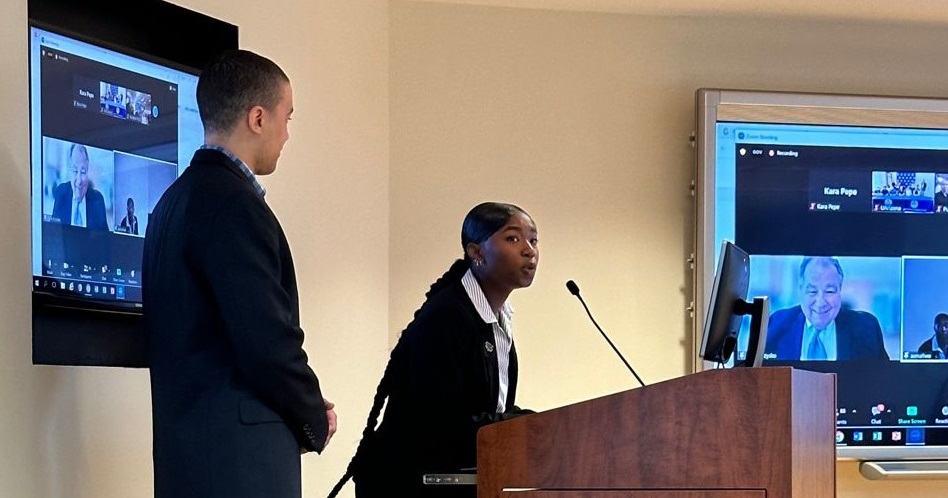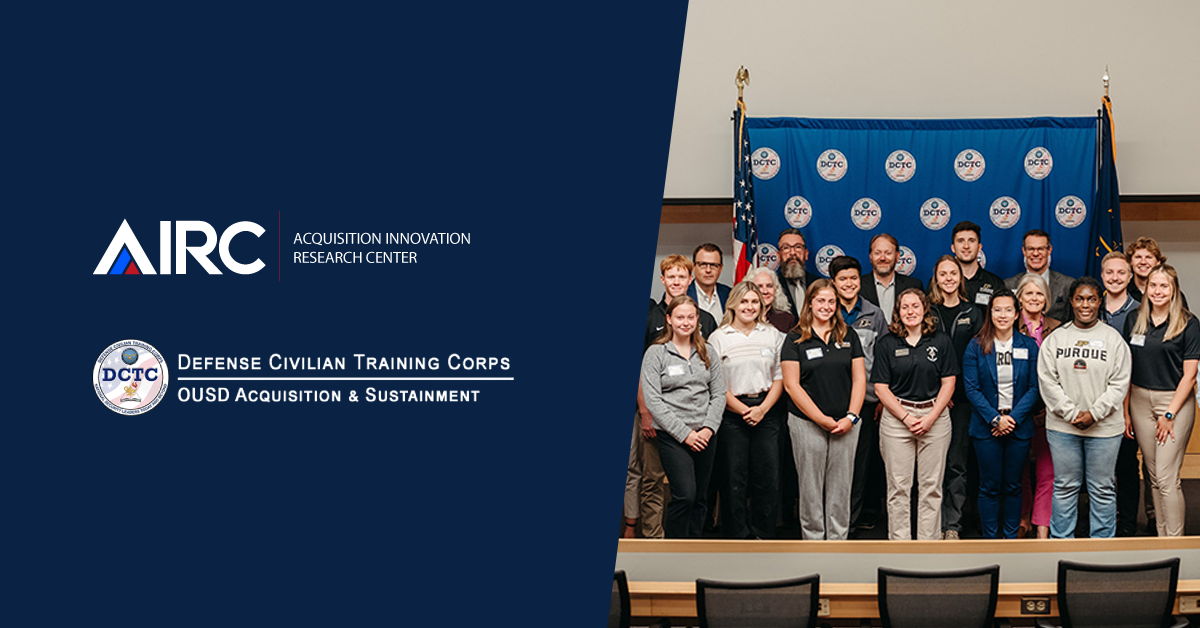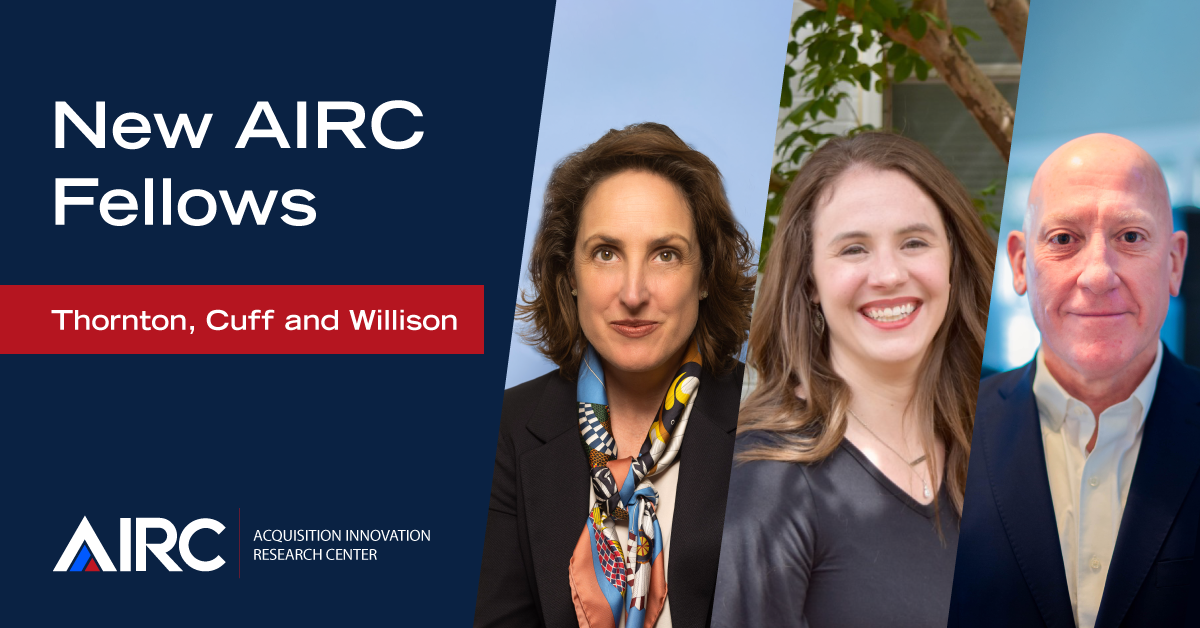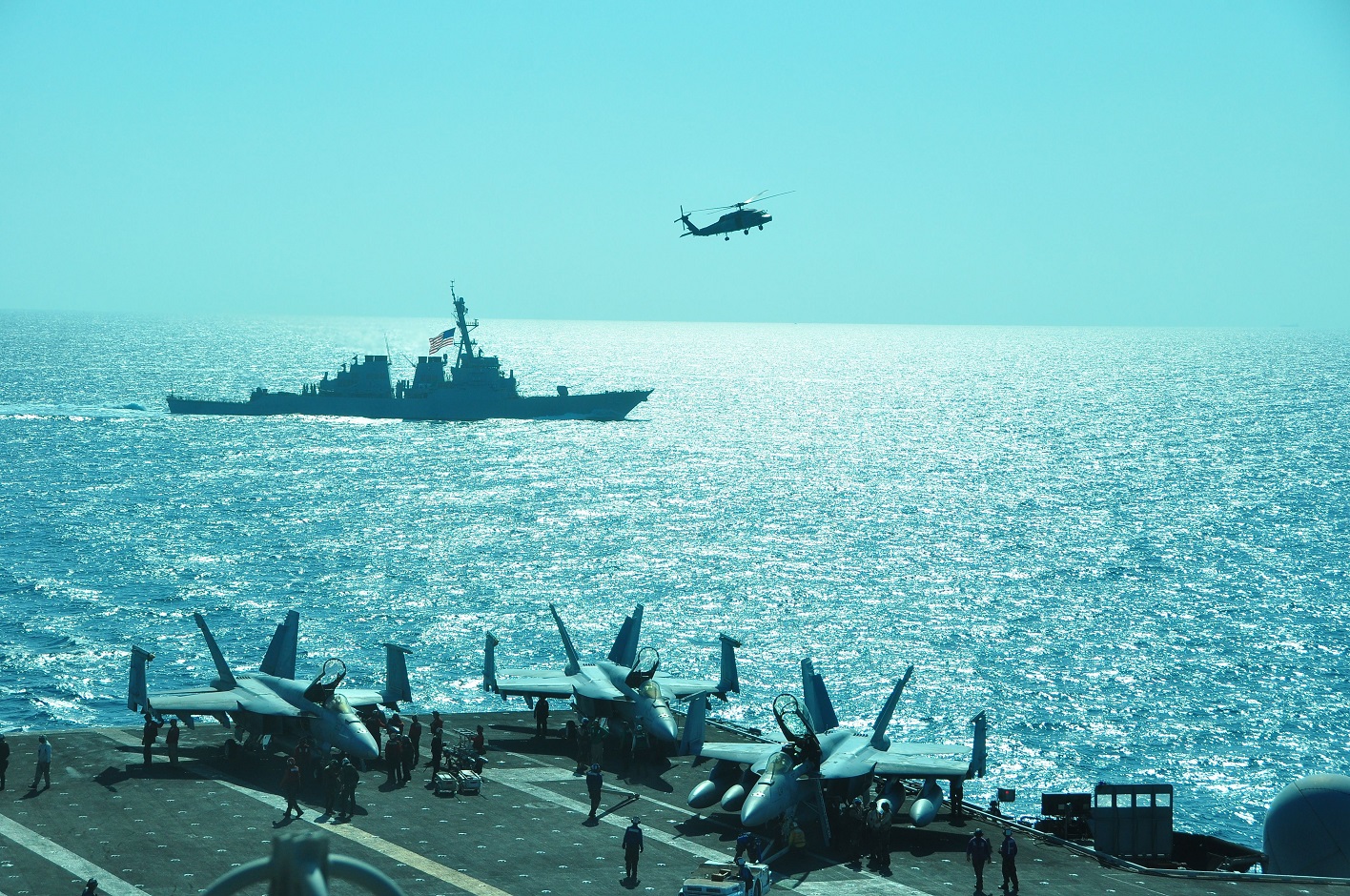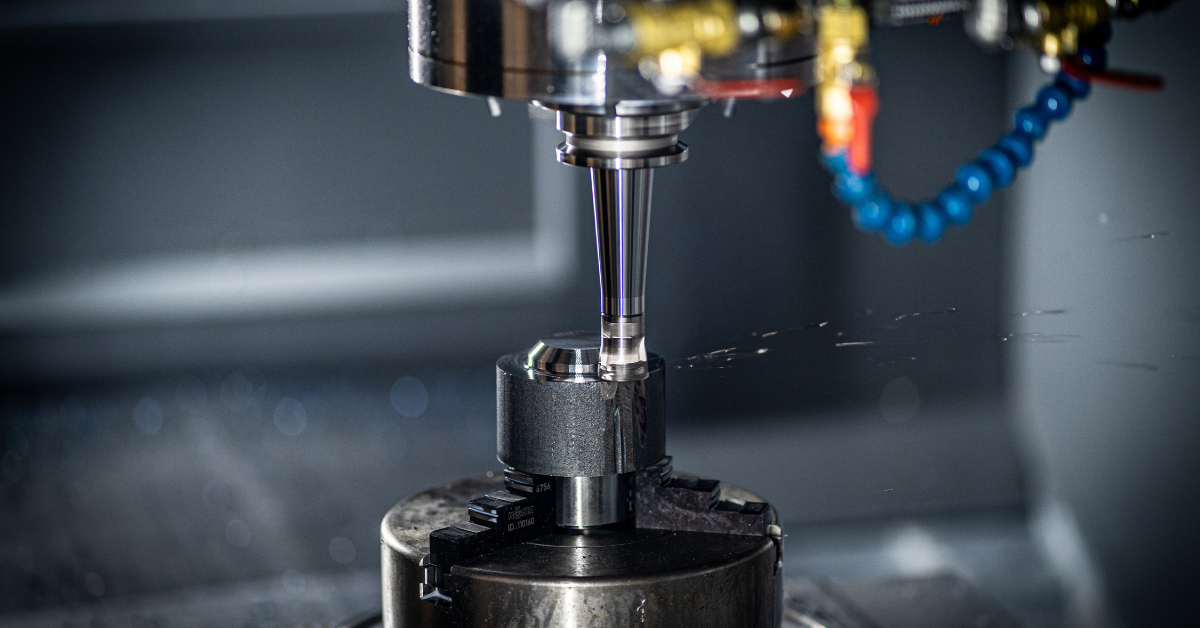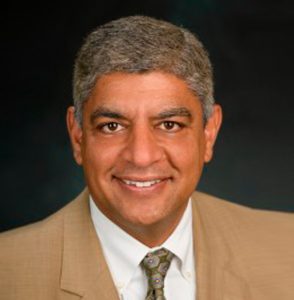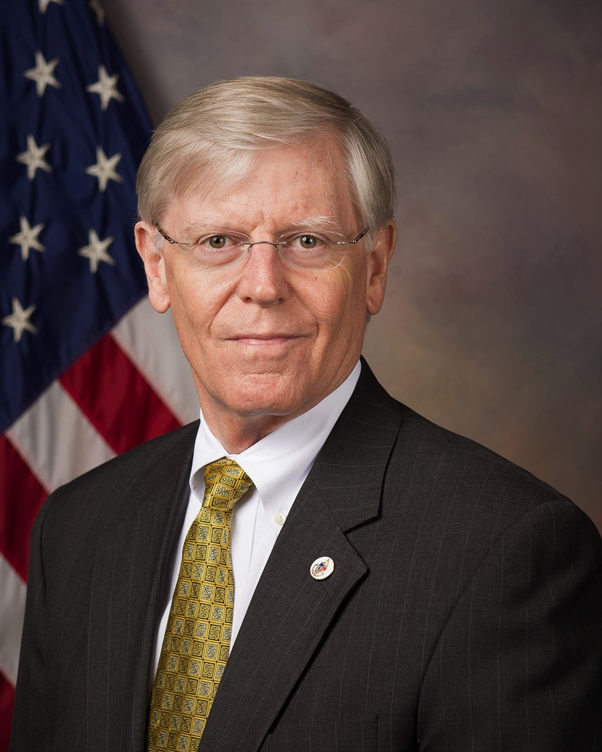DEC 8, 2023
Digital Materiel Management Industry Association Consortium Kickoff Sets Stage for Transformative Collaboration
The Acquisition Innovation Research Center (AIRC) joined the System Engineering Research Center (SERC), Air Force, Army, and defense industry leaders such as Boeing, Lockheed Martin, Northrop Grumman, and RTX at the Department of the Air Force and Army Digital Materiel Management (DMM) Industry Association Consortium (IAC) Kickoff in Crystal City, Virginia, on November 2 and 3.
Co-organized by SERC, AIRC, and the National Defense Industrial Association (NDIA), the workshop provided an opportunity to introduce DMM and initiate a collaborative framework across acquisition functional and lifecycle activities to accelerate the adoption of digital practices in the development, delivery, and sustainment of major defense systems.
Day one of the workshop opened with remarks by Dr. Arun Seraphin (Executive Director of the NDIA Emerging Technologies Institute and an AIRC Fellow) and Col. Erik Quigley (Director, Digital Acceleration Task Force, Air Force Materiel Command). A fireside chat featured a distinguished panel moderated by AIRC and SERC Executive Director Dr. Dinesh Verma with panelists Ms. Kristen J. Baldwin (Deputy Assistant Secretary of the Air Force for Science, Technology, and Engineering), Ms. Jennifer Swanson (Deputy Assistant Secretary of the Army for Data, Engineering and Software), and Mr. Robert Fookes (Director of Engineering and Technical Management, and Chief Engineer, Air Force Materiel Command). Their discussion delved into the challenges and opportunities surrounding DMM, addressing concerns related to data standards, policy enforcement, and integrating acquisition functions.
Next, Mr. Dan Heller (Vice President of Lockheed Martin Corporate Engineering) shared a strategic perspective on the state of practice towards DMM and digital transformation, the afternoon unfolded into three parallel sessions:
DMM Infrastructure and Environment: Led by Mr. James K. Hurst (Chief, Digital Transformation Office, Department of the Air Force), this session featured insights from industry leaders, including Mr. Jeff D’Amelia (Chief Engineer, Nuclear Enterprise Division, Air & Space Forces Center, MITRE) and Ms. Vicky O’Sullivan (Digital Engineering & Transformation Project Lead, MITRE) and perspectives from Dr. Dean Bucher (Principal Director, Digital Engineering Integration, The Aerospace Corporation), Mr. Rob Nolen (DoD Chief Technologist, Amazon Web Services) and Ms. Laura Szypulski (Director and Chief Architect, Digital Transformation, Northrop Grumman).
Data Standards, Ontologies and Style Guides: Led by Mr. Dan Andrews (Software Systems Architect, Deputy Assistant Secretary of the Army for Data, Engineering and Software), this session included a talk by Dr. Chris Benson (Chief Technology Officer, Istari, Inc.) and guiding perspectives from Dr. Jason Cook (Army DEVCOM Armaments Center), Dr. Mark Blackburn (Senior Research Scientist, Stevens Institute of Technology), Mr. Matt Seaman (Director, Data Solutions and External Engagement, Lockheed Martin) and Dr. Alberto Ferrari (Executive Director, Technology & Global Engineering, RTX).
Policy and Enforcement – IP Policy & Rights: Led by Dr. Alexis Ross (Senior Fellow, NDIA), this session included insights from Mr. Richard Gray (Director, Intellectual Property Cadre, Office of the Under Secretary of Defense for Acquisition and Sustainment), Ms. Kanna Annamalai-Brown (Chief of the Air Force Intellectual Property Cadre), Ms. Margaret Boatner (Deputy Assistant Secretary, Army for Strategy and Acquisition Reform), and Ms. Kelly Kyes (Policy and Strategy Lead, Boeing).
Day one concluded with a strategic perspectives panel featuring Col. Quigley as moderator and participants Brig. Gen. Luke Cropsey (Executive Officer, Command, Control, Communications and Battle Management, Office of the Assistant Secretary of the Air Force for Acquisition, Technology and Logistics, Department of the Air Force Integrating Program), Mr. Steven Wert (Program Executive Officer Digital, Air Force Life Cycle Management Center, Hanscom Air Force Base), Ms. Kris Acosta (Director, System of Systems Engineering, Space Systems Command), and Col. Walt Bustelo (Deputy Program Executive Officer, Air Force)
Day two commenced with sessions on integrating acquisition functions and DMM workforce development and culture. AIRC Fellow Ms. Stephanie Halcrow moderated the former, featuring talks by Mr. Mark Krzysko (Principal Deputy Director, Acquisition Policy, Department of Defense) and AIRC Chief Scientist Dr. Phil Antón, while Mr. Steve Turek (Technical Director, Digital Transformation Office, Department of the Air Force) led the latter, with Dr. Olivia Pinon Fischer (Principal Research Engineer, Georgia Institute of Technology), Dr. Nicole Hutchison (Senior Research Scientist, Systems Engineering Research Center), Mr. David Pearson (Director, Engineering and Technology Center, Defense Acquisition University), and Dr. Cliff Whitcomb (Professor of Practice, Cornell University)
The workshop concluded with a debrief of the final sessions and closing remarks from Col. Quigley and Dr. Verma, setting the stage for further discussions and collaboration as the Department of Defense and defense industry evolve together through digital transformation. Follow-on IAC meetings are being planned.
Follow AIRC on LinkedIn for regular updates on defense acquisition research.
